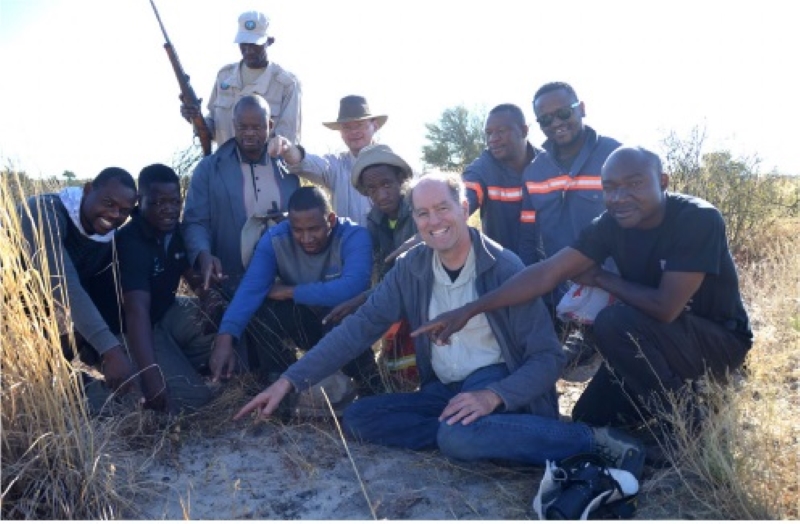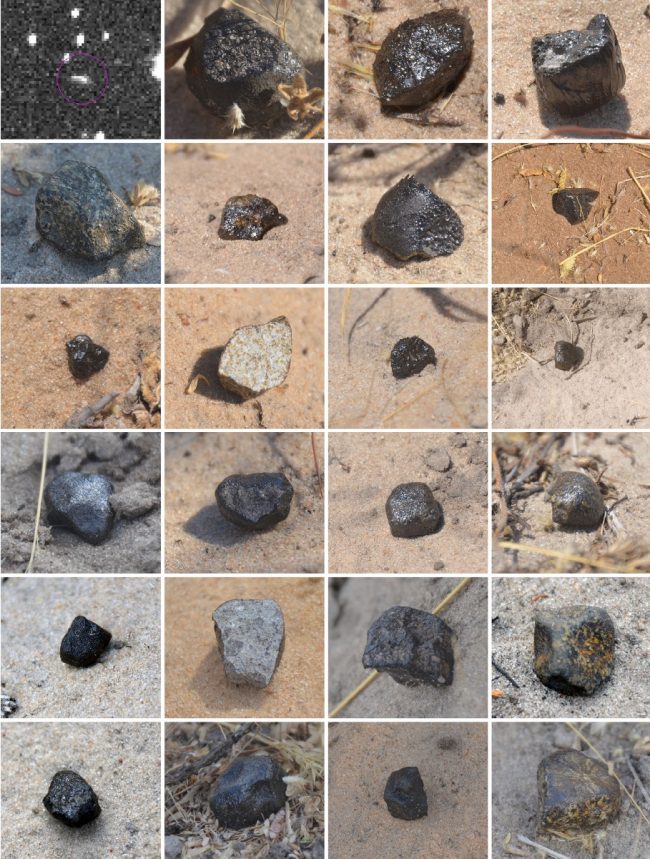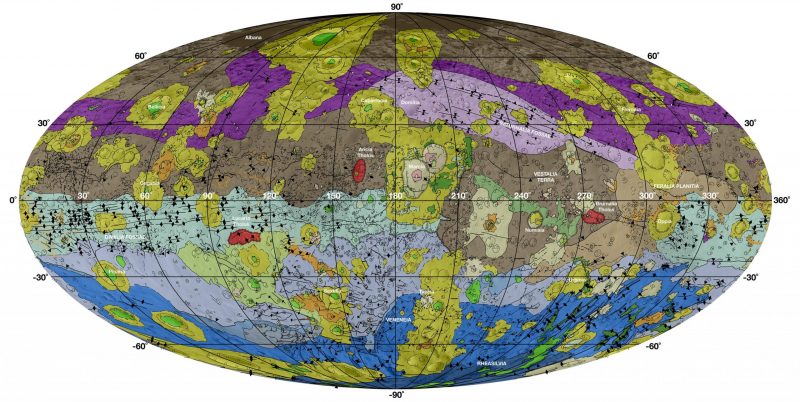
In 2018, an international team of scientists tracked a small asteroid as it streaked toward Earth and crashed into southern Africa. The team was able to find and collect pieces of the asteroid that were scattered across a Botswana game reserve. Now, the scientists believe they know the source of that asteroid. They say the space rock came from Vesta, the brightest and second-most massive object in the asteroid belt, a region of our solar system between Jupiter and Mars occupied by a great many solid, irregularly-shaped bodies of many sizes.
During the early days of the solar system, 1 to 2 billion years ago, enormous collisions nearly shattered Vesta, creating a slew of fragments that occasionally get close enough to Jupiter to hurl them in toward Earth. The researchers say it’s one of these pieces of space debris that landed in Africa in 2018.
The study of the findings was published April 23, 2021, in the peer-reviewed journal Meteoritics & Planetary Science.
Rocks from space that reach Earth’s surface are called meteorites. Most of the meteorites found on Earth were once part of asteroids from the asteroid belt that chipped off the parent body in a collision. Some rarer sources of meteorites are the moon and Mars.
When the asteroid – now known as 2018 LA – was discovered, it was only the second asteroid in space detected before hitting land. An international team guided by SETI Institute meteor astronomer Peter Jenniskens eventually found 23 fragments of the asteroid, which they estimate to originally have been 5 feet (about 1.5 meters) in diameter. The first meteorite found was named Motopi Pan after a nearby watering hole.

Jenniskens explained how they tied 2018 LA to Vesta:
Combining the observations of the small asteroid in space with information gleaned from the meteorites shows it likely came from Vesta, second largest asteroid in our solar system and target of NASA’s Dawn mission. Billions of years ago, two giant impacts on Vesta created a family of larger, more dangerous asteroids. The newly recovered meteorites gave us a clue on when those impacts might have happened.
NASA’s Dawn mission, which visited the asteroid belt and studied Vesta in 2011, found that the asteroid’s surface is covered in coarse-grained basaltic and silicate-rich rocks. The rocks are types known as howardite, eucrite and diogenite (HED). Other meteorites that scientists have recovered and studied on Earth with this same makeup are known as HED meteorites. Analysis of Motopi Pan conducted at University of Helsinki, Finland, showed it to also be an HED meteorite. Tomas Kohout of the University of Helsinki said:
We managed to measure metal content as well as secure a reflectance spectrum and X-ray elemental analysis from a thinly crusted part of the exposed meteorite interior. All the measurements added well together and pointed to values typical for HED type meteorites.
The scientists eventually studied more of the 23 space rocks that they found, although they did find some variability between the meteorites. Roger Gibson of Witts University in Johannesburg, South Africa, said:
We studied the petrography and mineral chemistry of five of these meteorites and confirmed that they belong to the HED group. Overall, we classified the material that asteroid 2018 LA contained as being howardite, but some individual fragments had more affinity to diogenites and eucrites.
When Dawn explored Vesta, it imaged the Antonia impact crater that was created in a collision 22 million years ago. One-third of all HED meteorites found on Earth were ejected 22 million years ago. The scientists wanted to know if Motopi Pan was also ejected from Vesta in the collision that created the Antonia crater at that time. Kees Welten of University of California, Berkeley, said:
Noble gas isotopes measurements at ETH in Zürich, Switzerland, and radioactive isotopes measured at Purdue University showed that this meteorite too had been in space as a small object for about 23 million years, but give or take 4 million years, so it could be from the same source crater on Vesta.
The researchers examined lead isotopes in zircon minerals to find that Motopi Pan experienced melting events 4.563 billion years ago and again 4.234 billion years ago. These two big impact events on Vesta billions of years ago helped to create the material of asteroid 2018 LA that was subsequently launched from the surface of Vesta in another impact some 22 million years ago. The billion-year-old impacts coincide with information already known about Vesta: Vesta experienced two significant impact events that created the Rheasilvia impact basin and the underlying and older Veneneia impact basin. Jenniskens elaborated:
We now suspect that Motopi Pan was heated by the Veneneia impact, while the subsequent Rheasilvia impact scattered this material around. If so, that would date the Veneneia impact to about 4234 million years ago.
Another possible origin for Motopi Pan on Vesta is a different crater from Antonia. This crater is named Rubria and is associated with the Rheasilvia impact. Jenniskens said:
On top of Rheasilvia impact ejecta is the 6.5-mile (10.3-km) diameter Rubria impact crater, slightly smaller than the 10.3-mile (16.7-km) Antonia crater, and slightly younger at 19 +/- 3 million years, but a good candidate for the origin crater of Motopi Pan.

While the exact crater for the source of 2018 LA is yet to be determined, it appears that Earth has received space rocks that once were a part of Vesta.
Bottom line: In 2018, an asteroid smashed into Earth over Botswana. Pieces were discovered in the Central Kalahari Game Reserve, and now researchers have revealed that the analysis shows them to have come from Vesta.











